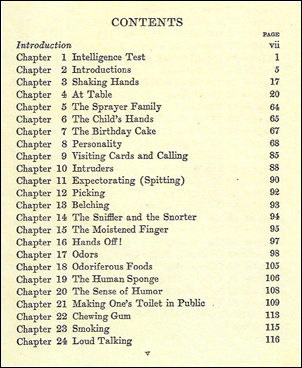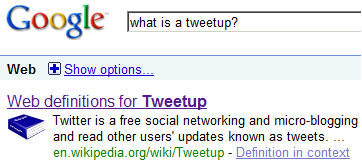Sometimes I get frustrated with software and I have to get it out. This time, instead of complaining to a friend completely unrelated to the lousiness of the software, I decided to throw up an official letter right to the head of this rewolt. Whether he answers it or not, doesn’t matter, I’ve gotten my thoughts out, and I believe it’s a reasonable point that I’m making here. I’ve of course written it in my true fashion – 6972 characters(without spaces), which by danish gymnasium standards is about a 5½ page letter, and I still think it’s too short. Anyways, here it is:
Dear Mr. Steve Jobs.
Firstly, I cannot help but admire the way you are changing the world one great product at a time. YOU are the reason we’re all running GUI shells and keep a mouse on the desktop. YOU are the reason we can have a few times the 1000 songs in our pocket. YOU are the reason the whole mobile hardware and software industry is moving towards a far more intuitive interface of touch. YOU are the reason we all can today browse the web and run 3D games on mobile devices that can lie in the palms of our hands. YOU are the reason for many great things in modern-day client computing, and YOU are probably the one that has contributed most to shaping the gestalt of that industry. By YOU, I of course mean the brilliant team of engineers at Apple, a group which sometimes also includes yourself.
You do all this, while maintaining, and expanding, a cool image, as the relaxed, but confident and more competent brother of Microsoft. I’m sure that you will disagree given your areas of interest today, but this is where you started, where you fought your first, great battle. While having lost that desktop battle to Microsoft on you’ve retreated, rearmed and stroke again, this time with greater power and elegance within the depth of our pockets, first with the iPod, and then with the iPhone.
This created a well-desired halo effect to your advantage, that today is slowly eating up Microsoft’s market-share on the desktop of our homes and offices as well as the lap’s of students, businessmen and others. However, it is of course not only the halo effect that has caused this. Your new generations of MacBooks and iMacs are great in exterior hardware design, as well as the interior software design. I understand that the very fact that you do both allows you to do things, unimaginable to Microsoft employees. Furthermore, you’ve kept telling us again and again that your products are better than Microsoft’s for years, and I think that strategy might finally be gaining ground with the prominent failure of Windows Vista. Today, I fall witness to more and more of my fellow human beings falling to your knees and going down the MacBook road, not having returned from it yet.
However, if this was a mere letter of admiration, it would, somewhere along the line, be pointless. In the paradise that you sell to us at prices not understandable to a hardware vendor, there is a flaw. I’m convinced that you are long aware of the fact that the idea that great design and intuitive interface costs money, is an idea harder to sell than the idea that good software does, which is Microsoft’s thing. This is something you’ve been battling with for the past 30 years, and therefore is least of my worries, because you are doing a great job so far.
Where my worries arise is in your lack of respect for great products other than your own, and how that disrespect is most definitely hurting your sales, or at the very least slowing them down én masse. This problem is best ascribed with the fact that I have not met a human being happy with the way iTunes, QuickTime or Safari run on a Windows-powered machine. While for the latter two there are perfectly fine alternatives, the first one we as consumers have to put up with, and it’s a demanding process. A product so essential to your core products, the iPod and the iPhone, and that is supposed to give us, aliens, an idea of how great and flowing Mac OS X is, is among the slowest peaces of software I’ve ever had to deal with, and I’m not at all alone in this view. And I’m even lucky! If I was running a Linux system, things would be a whole lot worse if I were to keep it legal. You only care about creating software for your own hardware, and everyone else is left barely hanging on the wings of your flight, presumably destined for usability heaven.
My daily use of iTunes can be described as follows. I connect my iPhone, which automatically fires up iTunes, sync it and close iTunes to not see it again until the next time I have to charge my device. I keep it open for as short a period as possible, and not a second longer. I guess I would liken it to having to visit a public bathroom in a mid-size Eastern European city – you do the deed and try to forget it ever happened. Ergo, I do not use the iTunes Store, except for iTunes U(a service which I’m greatly thankful for both to you, and the universities that provide the content), and have ABSOLUTELY no intention of running Mac OS X. Even if I do eventually buy a MacBook for it’s hardware and exterior design ingenuity, my choice would be to run Windows or Linux on it.
There is of course no real reason to why I seem like such a Windows fan-boy or Apple hater, and personally, I do not like to be characterized as either. I dual-boot Windows and Ubuntu(with the WMII dekstop manager) on my netbook, use VIM for small code snippets and Visual Studio for large projects, use LaTeX instead of Microsoft Office and Google Docs, use Google as the default search engine for the mere fact of being used to it, use Google Chrome as my default browser for the sheer minimalism and speed it stands for, and in my pocket I’ve got an iPhone 3G. All of that while I try to expand my programming skills in all the programming languages and environments out there. I love all those products, and not that much for what they can, but for my ability to interchange and not blindly follow you, Microsoft or Google.
The products that I use for the diverse tasks I might encounter, I pick depending on the ability of those products to perform those very tasks, both in terms of hardware and software capabilities. It should therefore come across to you very clearly, why, I wish for inter-connectivity between all of that hardware and software, a game which your company is NOT winning.
I cannot possibly know the true reason why Apple software is so terrible on Windows and absent on Linux, but if it is done so on purpose, in order to show how terrible or incompetent those underlying operating systems are in your sheer opinion, then you are far in the wrong here, because for me, and everyone else I’ve asked, you are creating nothing but the idea that Apple software engineers are TERRIBLE, or at the very least, the Windows team. However, if the Windows team is so terrible, then why should any other software team be any better? So you are either mismanaging the Windows team, and therefore all-in-all your software engineers, or on purpose releasing terrible software, in either case, it is the wrong path to follow. Take example of the Microsoft Office team for the Mac, and how greatly their software is working on the Mac. As far as I know it is the most popular software for the every-day office tasks of people uninvolved in academia.
Thus, while you are promising a paradise to the dedicated users of Apple products, you are enslaving all the rest of us, that still have a critical view of the of the efficiency of systems that we use for specific tasks. I will not use a Mac for the mere reason that the software I must have to use a great product of yours is incompetent in Windows and absent on Linux. These systems, each in their own way deserve respect for the mountains of great software already written for them, be that Visual Studio, VIM or any other. It is precisely for that reason that I’m in fact today, considering strongly to switch to an Android mobile device.
And to finish off.
All of this would’ve been a common letter from one engineer to another, merely filling up your inbox. However, allow me to mention something that I witnessed recently. My mother is a database administrator with most years of experience in Oracle database system, and therefore also Linux systems, but recently also Microsoft enterprise systems. She has never used an Apple product of a generation newer than something in the late 90’s.
I, the technology enthusiast of the family, decided to give her the new iPod Nano for her recent birthday, and she loved the device, but like I, hated iTunes before we even got it installed on her Windows machine.
The download is terribly large for a substantially simple peace of of software, and the experience that we had to go through setting up iTunes and the iPod, copying music showing off the iTunes Store was horrible to say the least. It was slow, laggy, unresponsive, and I could come up with many adjectives inappropriate for such a letter to describe it, but the point is, that such an experience is unworthy of your company’s name.



 3. Following through to the wiki page:
3. Following through to the wiki page:



